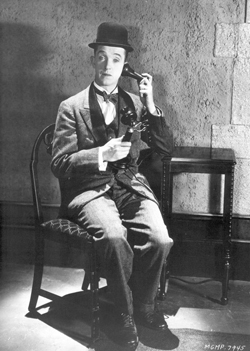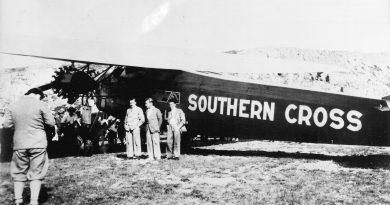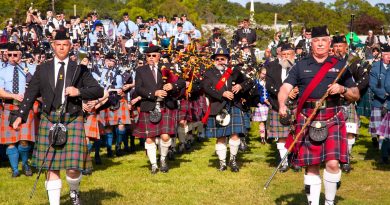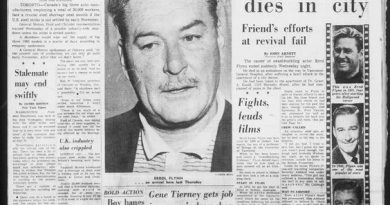Celebrities in Vancouver
Even when Vancouver was very young and very small, famous people began to drop by. Sometimes they weren’t famous yet: on May 8, 1911, when Fred Karno’s entertainment troupe from England began a week-long engagement at the Orpheum Theatre (not the present one) at Pender and Howe Streets, one of the performers was a hugely gifted 22-year-old Charlie Chaplin. Three years later he’d start his fabled movie career. There is a legend that Hollywood movie maker Mack Sennett was in the Vancouver audience and immediately spotted Chaplin’s potential, but, alas, that claim has been made by a hundred other places. The record is clear: Sennett saw Chaplin in New York City.

Stan Laurel, of Laurel and Hardy fame, was another Karno star, and first appeared here from May 1 to 6, 1911. He left the company in August, 1911, but returned in time to be with them again on their visits here December 30, 1912 and September 8, 1913. For a very detailed chronology of Stan’s visits here (and Charlie Chaplin’s, too) go to this site set up by A.J. Marriot.
Rudyard Kipling was in Vancouver no fewer than three times, the first in 1892, and even bought land here.
In 1891, a full 20 years before Charlie Chaplin’s appearance, the CPR built an entertainment palace called the Vancouver Opera House. In a town of 13,000 people this awesome edifice had 2,000 seats. It was an astonishingly grand theatre for such a tiny town, but an indication of the CPR’s optimistic view of the future. The optimism was justified: The Opera House became the centre of the city’s social life and a whole galaxy of glittering stars trod its boards.
Warning: some of these names are no longer familiar, but they were BIG in their time. The first production at the Opera House, for example, was Wagner’s Lohengrin, starring the famous Vienna-born soprano Emma Juch. Tetrazzini sang here, so did Mary Garden, Schumann-Heink and John McCormack (right). Violinist Mischa Elman played here, as did Paderewski, and Rachmaninoff, and John Philip Sousa brought his band.
Sarah Bernhardt performed in this place. Attendance dropped off drastically after the first performance when it was realized she performed only in French.
In 1910 famed ballerina Anna Pavlova (left)danced here, and was so taken with her reception—the critics went beyond enthusiasm into something approaching worship—she wrote about it in a memoir.
Around 1910 an English-born actor named William Pratt was looking for stage work here, and finding only fitful success. He took a part-time job as a carpenter helping to build what we know today as the PNE. He later went to Hollywood, changed his name to Boris Karloff and became a monstrous star. Another future Hollywood star was here about the same time: his name was Victor McLaglen and in 1909 he was a boxer. He fought world heavyweight champion Jack Johnson in Johnson’s first fight after winning the championship, and that bout was in Vancouver. It was a non-title fight, and McLaglen, 26, was a non-winner, but he made up for it by going down to Hollywood, appearing in more than 100 movies, and winning an Oscar in 1935 in The Informer. (He was also terrific in The Quiet Man.)
One of the few comics to make it big on stage, and on radio, and on television, was Jack Benny. He was in Vancouver in the early 1920s, appearing on the same bill as the Marx Brothers, and met his future wife here. Her name was Sadie Marks (Seattle-born, but she grew up here), but when they later married she changed it to Mary Livingstone. Jack Benny’s connection with Vancouver and the Orpheum Theatre was a warm and genuine one, and spanned nearly 60 years. He played a major part in raising funds in the 1970s to help save the Orpheum from conversion to a cinema multiplex.
Speaking of comedians and the Orpheum, Bob Hope appeared on stage at the earlier theatre of that name. When he came back to town many years later, this time in the present Orpheum, Hope spoke of his earlier visit and told the audience he’d come back to apologize.
Bing Crosby visited often, even officially opening Vancouver’s Sunset Community Centre. (Bing was once refused a room at the Hotel Vancouver when he walked in with a few days’ growth of beard and very informally dressed to be met by a reservation clerk who didn’t recognize him.)
The first U.S. president to visit Canada was Warren Harding, who chose Vancouver as the place to touch down. That was in 1923, and 50,000 of us turned out to hear him speak in Stanley Park. There’s a monument at the very spot to this day. It went up in remembrance of Harding, who died in San Francisco exactly one week after his visit here. Another presidential visit was in 1993 when Bill Clinton and Russian president Boris Yeltsin held the “Vancouver Summit” here.
In 1933 the American entertainer Texas Guinan, a big star in her day—in 1926 she made $700,000—died of amoebic dysentery at Vancouver General Hospital, failing to rally after an operation. She was just 43, was in town with her show. Texas was a singer and nightclub owner, famous in the 1920s for greeting her club patrons with “Hello, sucker!” Her clubs were continually being shut down and she was continually being arrested. “I’m nature’s gift to the padlock makers,” she once said. Somehow in Prohibition days you could always get a drink at Texas’s clubs. When he came here in 1959 Errol Flynn mentioned Texas Guinan, and told reporters that Vancouver would be a good city to die in. He was as good as his word, dying here a few days after his arrival.
In 1936 a future superstar, appearing in a touring show with other gifted up-and-comers, sat down and wrote his mom in Hoboken, New Jersey. Frank Sinatra was one of the singing Hoboken Four, and he was feeling homesick for the town and his Mom who was, reputedly, a very good cook.
Another entertainment icon, Gary Cooper, was the subject of one of Orpheum Theatre manager Ivan Ackery’s funnier stories. Cooper came to Vancouver often and became friends with Ackery. One night, after a staff party at the theatre, the two came stumbling out onto Seymour Street very early one morning and Cooper hitched a ride to the Hotel Vancouver on a street-cleaning machine!
Province writer David Spaner has written extensively on famous visitors to Vancouver, and may even write a book on the subject. In The Greater Vancouver Book, he cites a 1989 visit by boxer Mike Tyson. “The boxer arrived in Vancouver,” David writes, “where his estranged wife Robin Givens was shooting a TV movie called The Penthouse. When he arrived at her lodgings, the Hotel Vancouver, he was greeted by newspaper and television cameras. He grabbed a camera from a Vancouver Sun photographer and threw it against the wall, then lunged at a BCTV camera, ripping away its viewfinder and smashing it to the floor. Tyson tried to grab the television camera, but the cameraman escaped through a revolving door.”
David would have a lot to work with for that book: besides all the people cited above, we’ve been visited by Elvis Presley, the Beatles, the Rolling Stones, Lenny Bruce, Bob Dylan, Howard Hughes, Brooks Robinson (he played here briefly in the PCL, would later become the only member of baseball’s Hall of Fame to have played in Vancouver), writer Malcolm Lowry (who wrote much of Under the Volcano in a squatter’s shack on the North Vancouver mud flats), music hall star Marie Lloyd (who in 1914 was banned from the stage here for performing a song called The Ankle Watch, during which she lifted her floor length gown two inches, just enough to show her ankle, the brazen hussy) and a whole galaxy of opera stars like Joan Sutherland, Richard Bonynge, Marilyn Horne and Jessye Norman.
Then there is a whole galaxy of rock stars, pop and folk and country and jazz performers . . . and the artists brought in by impresario Lily Laverock. During the 1920s, 1930s and part of the 1940s, she brought in an eye-popping array of world-level performers. To name them all would double the length of this article!
[Photo of Chaplin in “A Night in an English Club,” 23 June 1912, Kansas City, MO, via TheRoyalZanettos.com]

![Chaplin in "A Night in an English Club," 23 June 1912 [Image: Kansas City, MO, via TheRoyalZanettos.com]](https://vancouverhistory.ca/wp-content/uploads/2021/01/Chaplin-One-Night-1912-800x445.jpg)



Pingback: Vancouver in the 1910s: History and Real Estate | Vancouver Heritage Homes